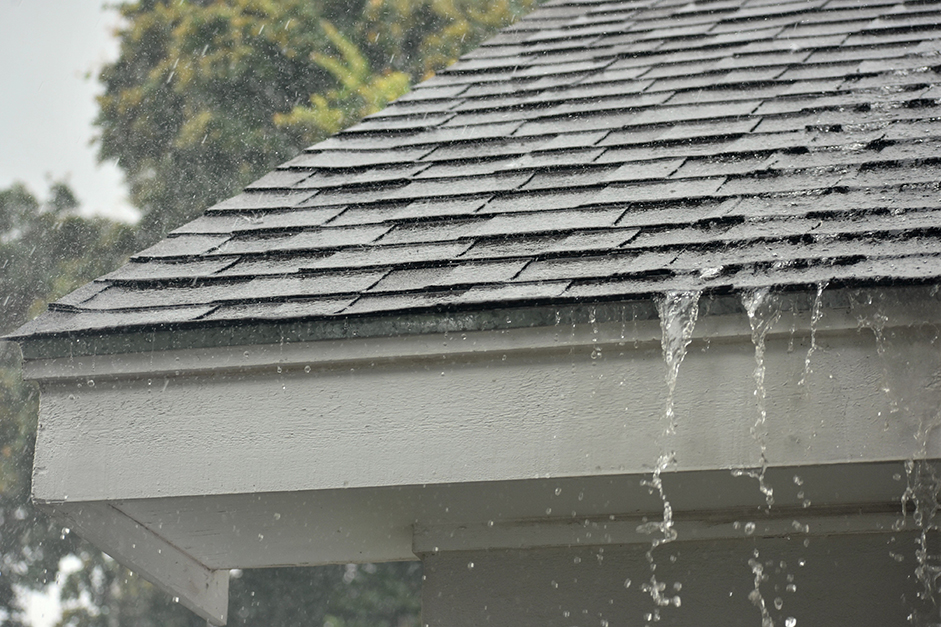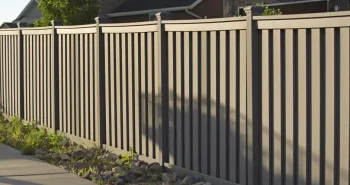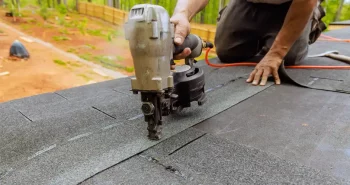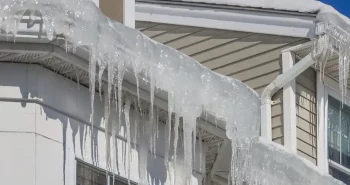Your home’s roofing system is the first line of defense against the elements. It’s one of the most important structures of your home and can affect several other features. While it does a great job of keeping you safe and comfortable, damage can occur. Sometimes, this damage is minimal and can be repaired more leisurely. Other times, the damage may require emergency repairs. To help you understand the difference, consider the following guide on how to tell if your roof needs emergency repairs.
What is Emergency Roof Repair?
If your roof needs emergency repairs, it means that the structural integrity is compromised, and—if nothing is done—it could result in severe damage or even collapse. Emergency roof repairs should be taken seriously and fixed as soon as possible to avoid further issues and even more expensive repairs. When contacting roofing contractors, be sure to specify that you believe there’s an emergency to try and avoid scheduling delays.
10 Signs Your Roof Needs Emergency Repairs
To stay proactive about the health and safety of your roof, it’s important that you make regular inspections. This includes simply observing the roofing structure from the ground, checking the attic, and having a professional inspection at least once a year and after any extreme storms. With that being said, some of the most common signs your roof needs emergency repair are as follows:
1. Water Dripping
Any sign of an active water drip is cause for concern. Unless your upstairs toilet or bathtub is overflowing, water dripping from the ceiling can be a sign that emergency roof repair is needed ASAP. Although you might picture water pouring from the ceiling, even a few drops can be an indication that something’s not right. At the first sign of a leak, get in touch with your roofing contractor. Then, take the time to move everything out of the way of the drip. This means moving furniture, rugs, electronics, or even simple décor. Then, place a bucket under the drip until it can be inspected and repaired.
2. Water Stains on the Ceiling
A visibly active drip isn’t the only sign of an issue. Any water stains or indications that there’s a leak somewhere unseen should be treated with the same degree of urgency. Brown water spots that are the size of an orange or smaller might not need an emergency repair, but you should get something scheduled as soon as possible. Any water spots that are larger than that require emergency attention. This is crucial to reduce the risk of the ceiling collapsing. Check along the corners, in the ceilings, and in other hard-to-see areas to ensure that any developing water spot is caught early.
3. Water Spots on the Walls
Another issue may be water spots appearing on the walls. While this doesn’t necessarily seem like it’d have anything to do with the roofing structure, they can happen. Otherwise, you may have a busted pipe, which still requires the attention of a professional.
4. Sagging Gutters
When you walk around your house, take some time to make a visual inspection of your gutters. You don’t need to do this every day, but with a proactive effort, you’ll be able to notice any signs of an issue before they develop into an emergency. However, if one day you come home to find that your gutter system seems to be sagging off of your roof, it’s time to call a professional. Gutters only sag when they’re too heavy or holding too much weight, which is usually an indication of a clog. If not addressed, it can cause the entire system to pull away from the roof, which can create further cracks, issues with the foundation, or even broken windows.
5. Broken or Missing Shingles
Shingles are your roof’s primary line of defense. Although it’s normal for aging roofs to lose a shingle here or there with time, they still need to be replaced. Otherwise, the area that’s exposed is vulnerable and can easily be damaged by the elements. This can lead to further leaks, mold growth, or worse. Over time, too many broken or missing shingles may even call for an entire roof replacement.
6. Balding Shingles
Asphalt shingles have thousands of tiny little granules on them. These act as the protective covering, which is necessary for the shingles to do their job. If you notice granules starting to shed, or bald shingles, you need to contact a roofing contractor. Severe shedding can be an indication that your roof is failing and needs to be replaced, so don’t hesitate to call a professional.
7. Mold or Moss Growth
While it can give your roofing system a mysterious appearance, mold or moss growth should not be glorified as an aesthetic feature. Moss typically grows more quickly on the side of the roof that receives less sunlight, and if not removed, it can lead to a higher risk of water damage. Moss and mold tend to act like a sponge, soaking up any water that they can. Then, they hold onto it, causing the water to seep in between the shingles and damage the underlayment. The longer moss or mildew is left unattended, the deeper it can penetrate the roofing structure. Eventually, this leads to mold inside your home, which can be dangerous to your health. Although early signs of moss or mildew can be removed with products, if your roof is overgrown, you’ll need to contact a professional.
8. Soft or Rotten Sheathing
The sheathing is a part of the roof that acts as a protective layer. It’s installed on the top of the beams, below the shingles or roofing material. This helps with moisture control and containment. Oftentimes, the sheathing is made of wood, which is susceptible to rot over time. If you think your sheathing is rotting, contact a professional. Some indications of this could be paint cracks, stains, or even a sagging ceiling or roofline.
9. Damaged or Missing Flashing
The flashing on your roof is usually where two joints or planes meet. It’s added support that helps connect and seal roofing materials. Most often, you can find flashing around chimneys, skylights, vents, and in all of the roof valleys. Although it’s usually made from sturdy materials like metal or hard plastics, it’s not immune from damage. If you notice your flashing is damaged or missing, consider it a roofing emergency.
10. An Aging Roof
Finally, although not quite as time-sensitive as physical damage, if your roof has been installed for 20 years or longer, it’s time to schedule a roof replacement. Problems can arise and quickly escalate when the roof is too old, which can lead to even more expensive repairs. Undergo yearly inspections and listen to your contractor when a replacement is recommended.
What to Do if Your Roof Needs Emergency Repairs
If you notice any signs that indicate that your roof needs emergency repairs, it’s important to call a roofing contractor as soon as possible to schedule an inspection. If you’re experiencing a significant water leak, you can try to cover gaps using a tarp. However, never put yourself in any situation that might be dangerous. If there are gaps on your roof and you cannot reach them, don’t overexert yourself, trying to tarp them off. Instead, go into your attic and try to do what you can to contain the damage there. You should also make a call to your homeowners’ insurance to begin the process of filing a claim. While you won’t be able to complete this step until a professional has inspected the damage and recommended necessary repairs, it’s good to inform them of the issue as soon as possible.
If you notice any of the above signs of damage, don’t hesitate to call First Star Exteriors as soon as possible. We offer high-quality roof repair, maintenance, and installation for homeowners throughout several states. Our team understands the immediacy involved in emergency roof repairs, which is why you can call us 24/7. If no one is available to answer your call, you can expect a reply within 24 hours. At First Star Exteriors, we believe there’s a perfect balance between hands-on treatment, quality of work, and speed of delivery, which is why our contractors always take the time to understand your needs and communicate effectively. From the first quote to the last nail placed, First Star Exteriors is here to help. To learn more about our roofing options or to get a quote, contact us at (479) 267-4800 or fill out our contact form here.





